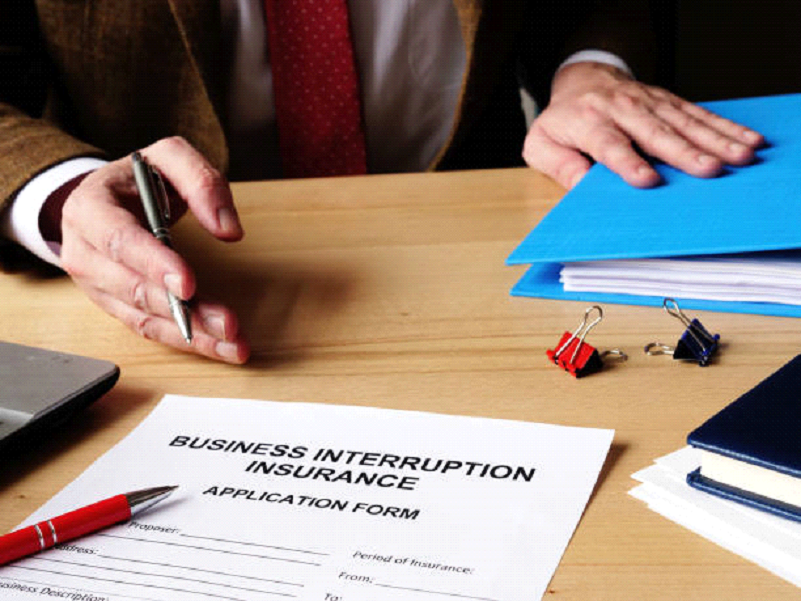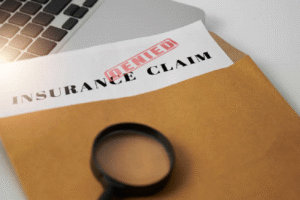Picture This…
Your business is humming along—sales are steady, staff are engaged, and you’re finally hitting your stride. Then disaster strikes. A fire rips through your storefront. A flood shuts down your warehouse. Or government regulations force your doors to remain closed. Suddenly, you’re not just repairing property; you’re scrambling to keep everything else afloat.
That’s where business interruption insurance comes in—a powerful, often overlooked piece of your insurance puzzle that bridges the gap between physical damage and financial stability.
1. What is Business Interruption Insurance?
At its core, this insurance steps in when a covered event—like a fire, flood, or storm—causes physical damage, disrupting your business operations and revenue. It doesn’t just pay for rebuilding your property; it helps you maintain cash flow, continue paying bills, and even cover temporary relocation costs while you get back on track.
Unlike standard property insurance, which handles repairing or replacing physical assets, business interruption insurance ensures you don’t lose income and fall into a financial spiral during downtime.

2. What Exactly Does It Cover?
This isn’t just a nice-to-have add-on—it literally keeps your doors open and people paid when disaster hits:
-
Lost income: The profits you’d normally make during the closure period.
-
Fixed expenses: Essential ongoing costs—rent, utilities, loan payments, taxes—still demanding payment even when operations are halted.
-
Payroll: Your team still needs income, and retaining talent during interruptions is often cheaper than rehiring later.
-
Relocation and extra expenses: Costs for moving to a temporary site, renting equipment, or leasing vehicles to keep serving customers.
-
Civil Authority coverage: If authorities order your closure (like curfews or roadblocks), this triggers coverage—even without direct damage to your premises.
Some policies also include contingent business interruption, which covers disruptions if suppliers or major customers suffer damage—keeping your entire supply chain going.
3. Why It’s More Important Than You Think
-
Reality check: About 25–50% of businesses that suffer major property damage never reopen or collapse within a few years.
-
Peace of mind: Knowing you’re covered lets you focus on what matters—recovery and reopening—instead of scrambling for cash.
-
Payroll and retention: Carrying on payroll through a crisis helps you keep your team—and saves on re-hiring costs.
-
Unexpected triggers: Government-mandated closures or supplier shutdowns can hit your revenue—this coverage often helps here, too.
4. The Anatomy of a Policy
Understanding your policy in detail is key:
-
Period of Restoration: When coverage kicks in—usually from the date of the incident until your operations are fully restored. Most policies run 12 months, though some let you extend coverage.
-
Extra expense coverage: Helps finance temporary fixes—like renting alternative space or equipment—if it saves you more in downtime losses.
-
Extended period of indemnity: A smart add-on covering the slump after reopening, because business doesn’t always bounce back immediately.
Exclusions to watch for:
-
Pandemics or viruses like COVID-19—most BI policies won’t pay for closures unless specific disease clauses are added.
-
Earthquakes and floods often require separate riders—regular BI typically excludes them.
-
Utility outages, war, or nuclear events often fall outside the policy’s scope.
5. How to Choose Smart Coverage
Here’s your action checklist to protect your business:
-
Detail loss scenarios: Think through fires, floods, riots, supplier outages, even civil authority shutdowns.
-
Calculate revenue vs expenses: Need to insure for projected income and ongoing costs over your downtime period—work with your agent for accuracy.
-
Include extra expenses: Often worth the cost—they accelerate recovery.
-
Add contingent BI if key suppliers or clients are vulnerable—protect your supply chain.
-
Understand restoration period terms: You may restore faster—or slower—than covered; know your limits.
-
Review carefully: Understand what’s covered, what’s excluded, and how “cancellation triggers” (like civil orders) work.
6. Filing a Claim the Right Way
Timing, documentation, and strategy can make or break a claim.
⚡ First priorities:
-
Notify quickly: The moment disruption occurs, reach out to your insurer.
-
Document everything: Photos, financial records, transactions, communications—capture all loss evidence.
🧩 Build your team:
-
Accountants for revenue documentation.
-
Risk managers or brokers for claims strategies.
-
Engineers/contractors to outline repair timelines.
-
Named adjusters—if available—to work closely with the insurer.
📝 Filing and presenting:
-
Be proactive—don’t wait. Draft a claim strategy with timelines and financial projections early.
-
Tax returns, P&L statements, bank records—all filed promptly and clearly.
💵 Interim funds:
-
Request advance payments while final amounts are assessed—these funds can stabilize your cash flow during recovery.
🤝 Negotiation matters:
-
Settlement happens after careful review. Be prepared to discuss assumptions, timelines, and evidence clearly—and maintain good communication.
7. Real-World Scenarios
Case 1: Wildfire Sheltering
A western U.S. manufacturer shuts for weeks due to nearby wildfire smoke. Civil authority orders evacuation, even though the facility isn’t damaged. BI coverage with civil ingress/egress pays for payroll, rent, and missed income.
Case 2: Fire + Extended Loss
Mary’s retail shop burns in March. Restoration takes three months, but business only partly revives afterward. BI combined with extra expense and extended indemnity covers lost income, relocation costs, and post-repair recovery.
8. A Cautionary Tale: Pandemics
During the COVID‑19 pandemic, countless businesses assumed BI would cover forced shutdowns. Courts worldwide often ruled insurers weren’t liable—unless policies explicitly named “disease.” In the UK, some Supreme Court wins clarified certain wordings—yet most standard BI policies excluded pandemics. This highlights the importance of clear terms and explicit coverage.
9. Bottom Line: Why You Need It
Business interruption insurance isn’t about paying for roofs or inventory—it’s about:
-
Keeping your business alive during disruptions
-
Paying employees and bills without wiping your cash reserves
-
Acting fast and decisively post-disaster
-
Recovering faster—with dignity and trust intact
10. Your Action Plan
| Step | Action |
|---|---|
| 1 | List risks to your business—natural, civil, supply chain, pandemic |
| 2 | Calculate 12-month projected revenue and fixed costs |
| 3 | Identify best coverage combos: extra expense, civil authority, contingent BI |
| 4 | Discuss limits and restoration periods with your broker |
| 5 | Review policy examples for exclusions—ask questions |
| 6 | Set up pre-loss claim team and communication protocols |
| 7 | Revisit annually—or after major business/supply changes |
Why Business Interruption Insurance Is Critical for Small Businesses
For many small and medium-sized businesses, cash reserves are limited. Even a short closure can trigger a financial crisis, making recovery difficult or impossible.
Without business interruption insurance, you’re still responsible for fixed costs like rent and payroll while no money is coming in. This gap can quickly drain your resources and force painful decisions.
With this coverage, you have a financial buffer that helps keep your business operational and your employees paid until normal business resumes.

Additional Tips for Business Owners
-
Regularly Review Your Policy: As your business grows or changes, update your insurance to match new risks and assets.
-
Document Everything: Keep detailed records of income and expenses to make filing claims easier.
-
Plan Ahead: Develop a disaster recovery plan alongside your insurance policy. Insurance helps financially, but preparation helps you bounce back faster.
Final Thoughts: Business Continuity = Peace of Mind
Think of business interruption insurance as more than a formal expense—it’s a strategic investment, a stand-in CFO when disaster strikes, and a plan.b when life overrides plan.a. Sure, you hope you never need it—but if you ever do, you’ll be grateful beyond measure.
Your business deserves protection that goes deeper than repairs. Equip yourself wisely, be ready in advance, and come back stronger—no matter what happens.





